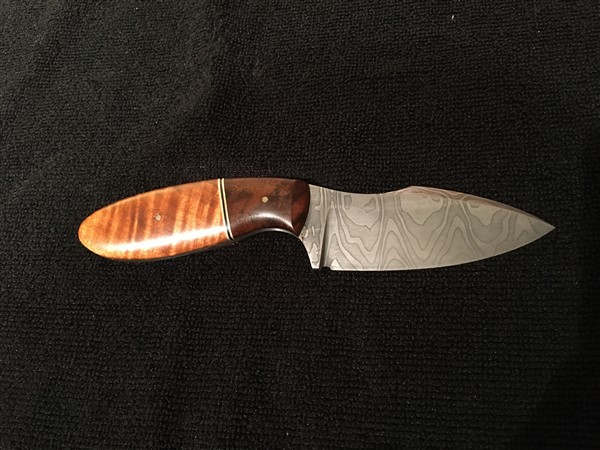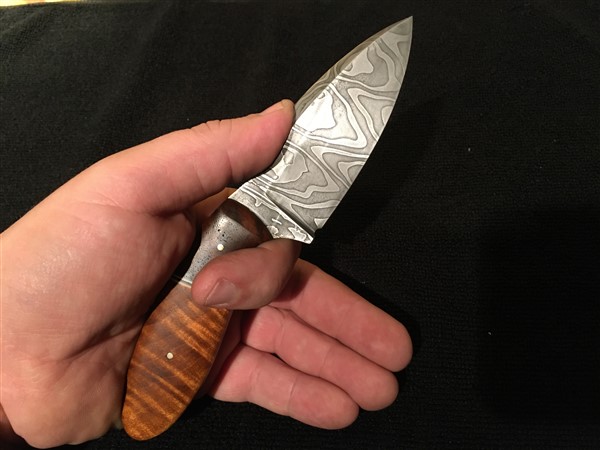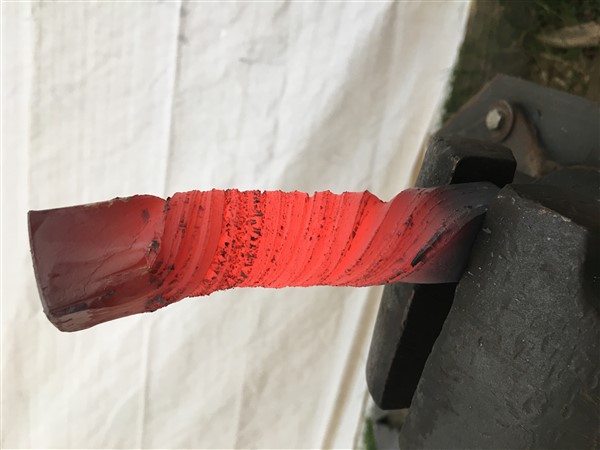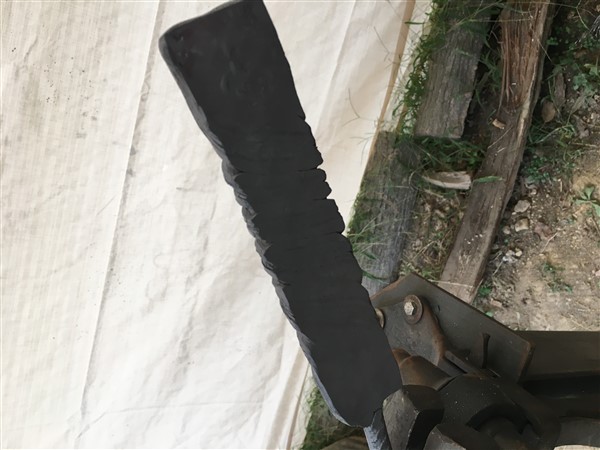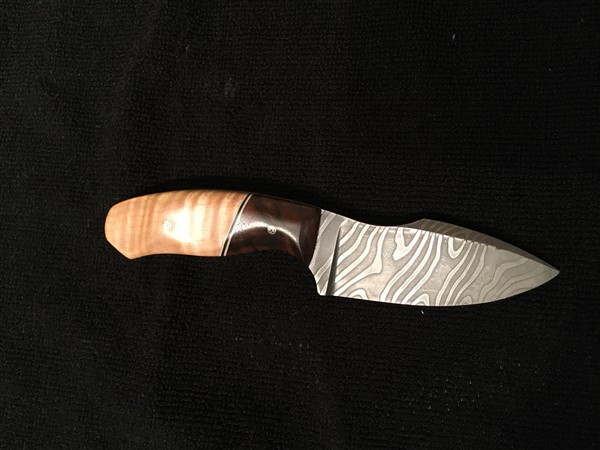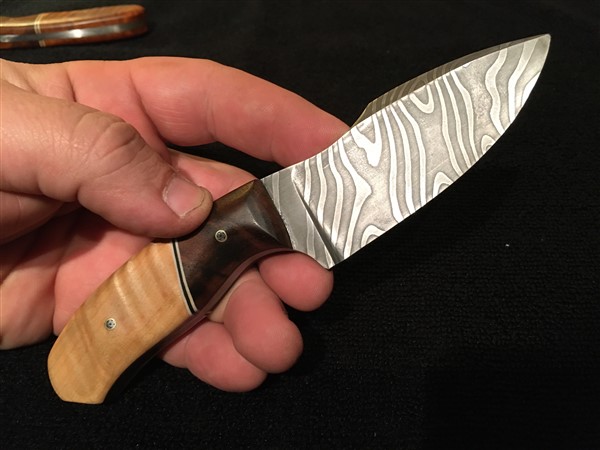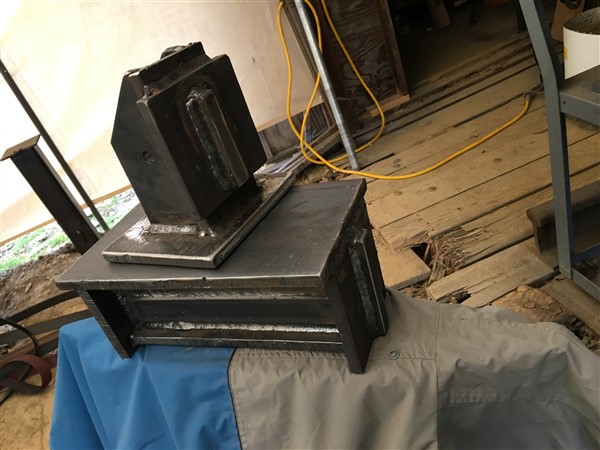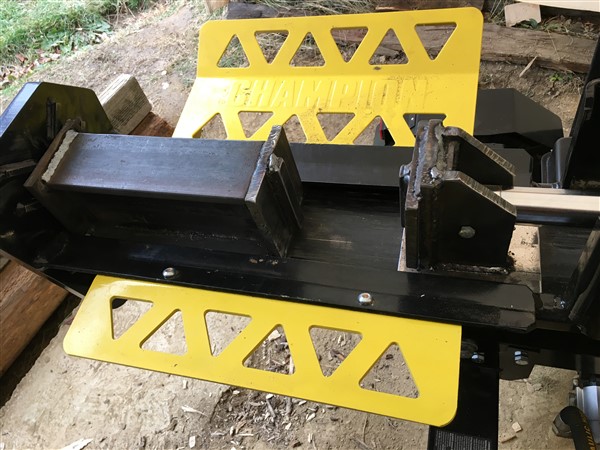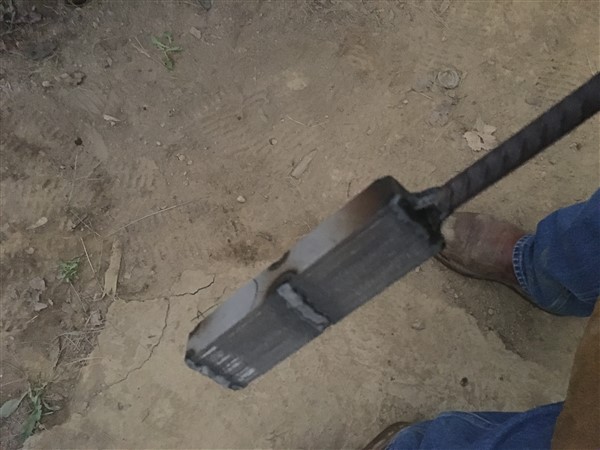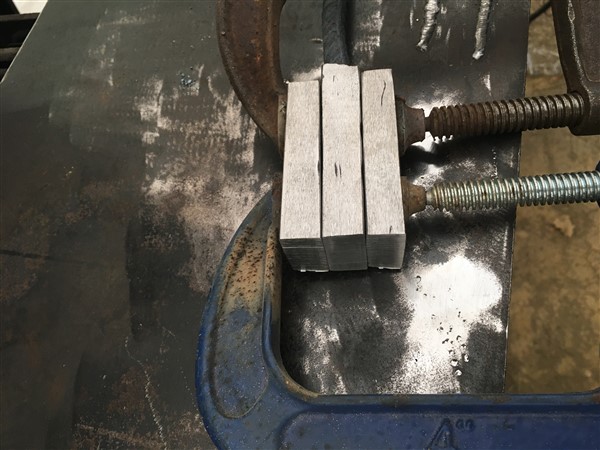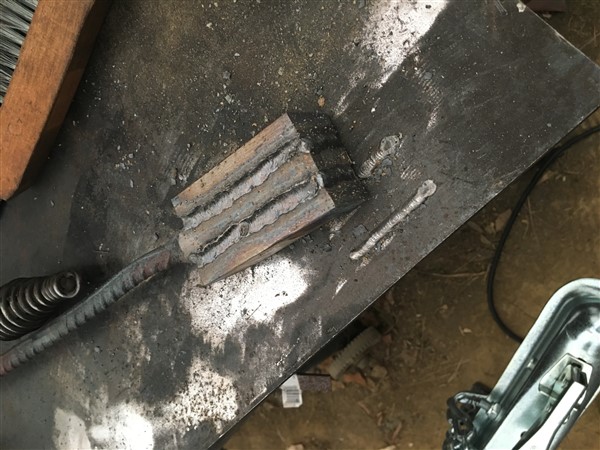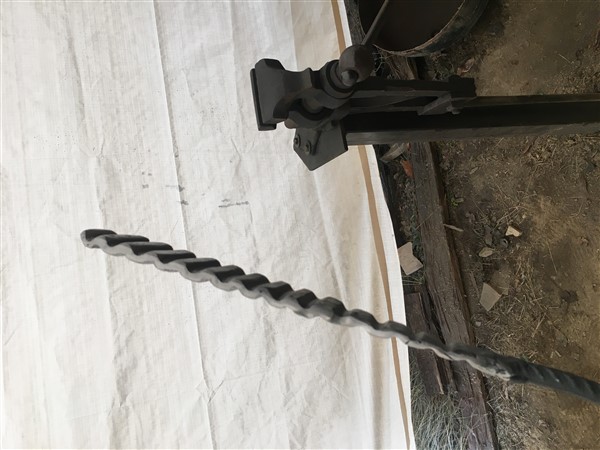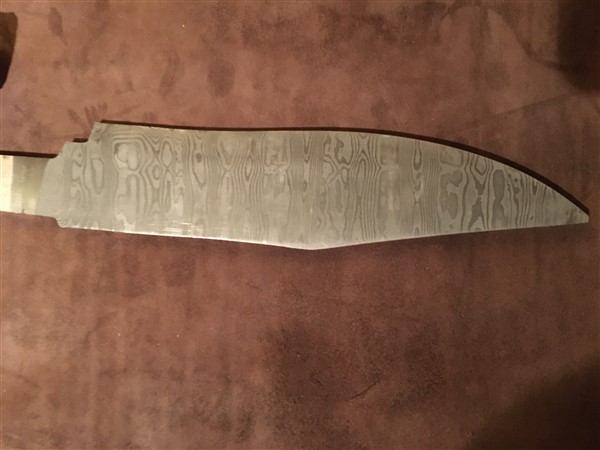I have been working on putting together a leather working tutorial on sheath building. In preparation, I was taking pictures of my next knife that needed a sheath, my first finished Damascus knife and realized that I never shared my forge welding journey up to this point. I love reading everyone else's "show and tells" so I thought I would share this. Any critiques would be appreciated.
In my last post "having fun", I showed a pictures of my first Damascus attempt. Its an 11 layer stack that I flattened by hand hammer then ground a ladder pattern into. 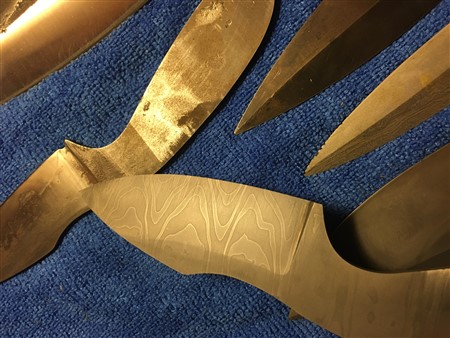
It came out nicer than I expected.
Having more material left, I went ahead and welded another stack of the same dimensions (11 layer)together and forge welded then twisted.
I then beat it flat.
I quickly learned that I should have forged the billet into a rounder profile. I had to burn thru a bunch of belts to get thru the creases caused by the sharp corners that folded over when twisted.
After enough determination, and paying for my inexperience with a pile of sacrificial belts, I had a clean billet.
Once finished, I'm very pleased with the results, being my second forge welded knife.
I have learned so much up to this point. One, paying attention and taking notes while J.W. Randall was giving class at Troy, Ohio has been extremely helpful. Two, Hand hammering billets is brutal for a guy with carpel tunnel surgery done on both wrists in the past. I also learned that very similar to other styles of welding, and having many years of welding behind me, this process relies on the same concept of cleanliness of material to get a good finished product.
While my hands were hurting, I kept thinking about my log splitter. I wanted to try a more complex attempt with the last two pieces of material that I had, but couldn't afford to make any permanent modifications.
So this is what I came up with using some 1/2" plate.
The idea was to only have to remove the bolt from the cylinder driven wedge. Lift the cylinder pivoting it on its rear mounting point, slid in the base, slid in the wedge's replacement and replace the removed bolt. Worked out pretty slick.
I them cut, cleaned and welded the remaining material getting a 1x2x9" 16 layer stack.
After forge welding, I used the splitter to draw it out to about double the length then cut it into 3, 6" pieces.
That got cleaned, stacked and welded.
Using the press to get my width first, I then drew it out. Then I ground the ladder into it, starting to get excited about whet I might find, if this actually works out.
So here is the billet in its current condition. I ground of the scale and took it to 120 gt to see the etch after profiling. I am pleased.
There is a randomness to the hand flattened billets that is missing in the one that came off the "press". Hand hammer must influence the layers in a more chaotic, random way. Either way, super interesting and fun.
Hope anyone that reads thru this enjoys the shared journey.
Thanks for having me.
Take care.
Nice looking knives ! Thanks for posting your process.
HermosoðŸ‘ðŸ¿ðŸ‘ðŸ¿ðŸ‘ðŸ¿ðŸ‘ðŸ¿ðŸ‘ðŸ¿
Mi guel Angel Sanhueza Lang.
Cuchillos Artesanales Yensen
https: //www.instagra..._custom_knives/
https: //www.facebook...100006937380193
Puerto Montt
Chile
Cool stuff Tomas!!
Want to see more of my work follow me on Instagram:JasonVolkertKnives
Want to get in touch with me [email="[email protected]"]Email[/email] me.
Your welcome Rich. Thanks for the positive comments Guys.

